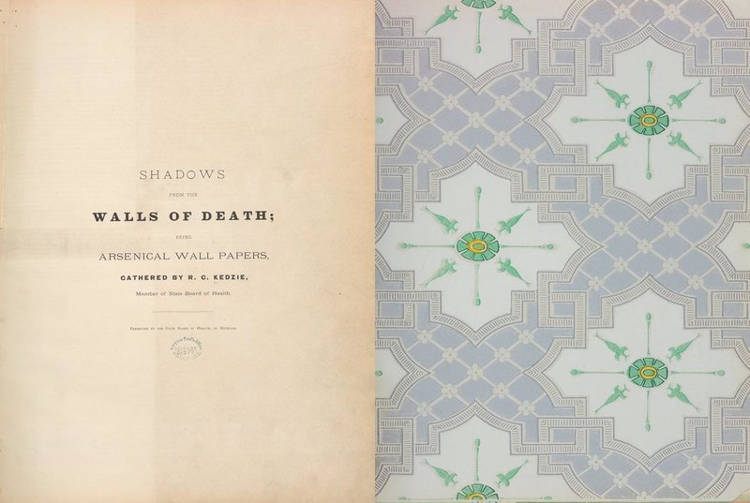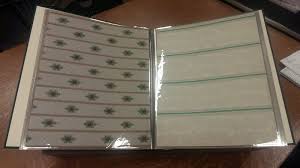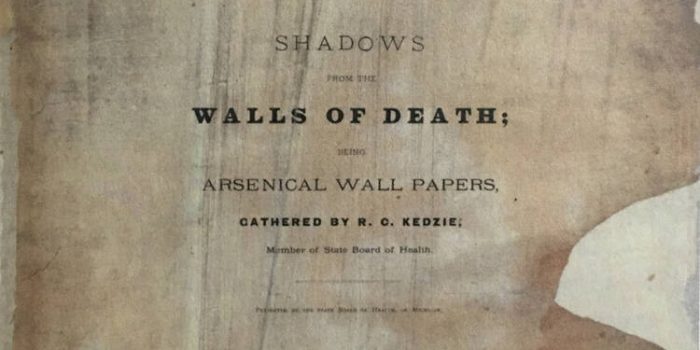When people talk about potentially-deadly books, they often refer to the radical or controversial thoughts they have, but in the example of one very frightening book, the chance for it being lethal is very literal.
Shadows from the Walls of Death: Facts and Inferences Prefacing a Book of Specimens of Arsenical Wall Papers is a book published in 1874 by Dr. Robert M. Kedzie, a Union surgeon at the time of the American Civil War who afterward turned into a professor of chemistry.
Out of approximately 100 pages, 86 happen to be samples of arsenic-pigmented wallpaper that people bought to decorate their homes at that time.

Although arsenic was an investigated toxin possible of killing a person if consumed, nobody thought it could kill even when utilized as an active ingredient to create wallpaper colors more bright. Kedzie did, though, so he printed this book to be a fair warning.
As the 19th century came to an end, about 65 percent of all wallpaper in the United States were made using arsenic, and Dr. Kedzie was already aware of something that would afterward become a known scientific fact – that, over a period, these wallpaper-decorated walls released this poison that unhurriedly killed inhabitants. Arsenic was loose in the air, in food, on people’s hands. It made them ill and seldom resulted in death.

As part of an attempt to increase awareness about the deadly danger of arsenic-laden wallpaper, Robert M. Kedzie created 100 copies of Shadows from the Walls of Death and released them to public libraries across Michigan, with a side-note stating the objective of the book and a warning to librarians not to let children hold the book.
The book Shadows from the Walls of Death included dozens of arsenic-infused wallpaper samples Kedzie had gained from merchants and published as a warning to anyone who glanced at it. But doing that was on its own a nearly-deadly affair, as the pages were made with the poison. In fact, when Kedize’s theories were proven accurate, most libraries that had been given copies of them had them thrown away, declaring them too dangerous for the public.

Out of the actual 100 copies of this interesting book, only four remain to date. Two are in Michigan, Dr. Kedzie’s home state (one at Michigan State University and the other at the University of Michigan), one found its way up at Harvard University Medical School, and the fourth is stored at the National Library of Medicine, which also scanned it and made it accessible online.
Handling and even keeping copies of the Shadows from the Walls of Death is a critical affair. Before having each page covered in plastic film, in 1998, the copy at MSU could only be handled by personnel wearing particular gloves. There were all types of limitations regarding the time span it could be left out for, and people had to be careful not to touch anything else while using the gloves, let alone lick their fingers…
Although Dr. Kedzie’s attempt to increase awareness about arsenic-infused wallpaper was stated to have poisoned one lady who studied the book, it was popularly viewed as an efficient way of publicizing the threats living in a home plastered with the deadly decorations.


